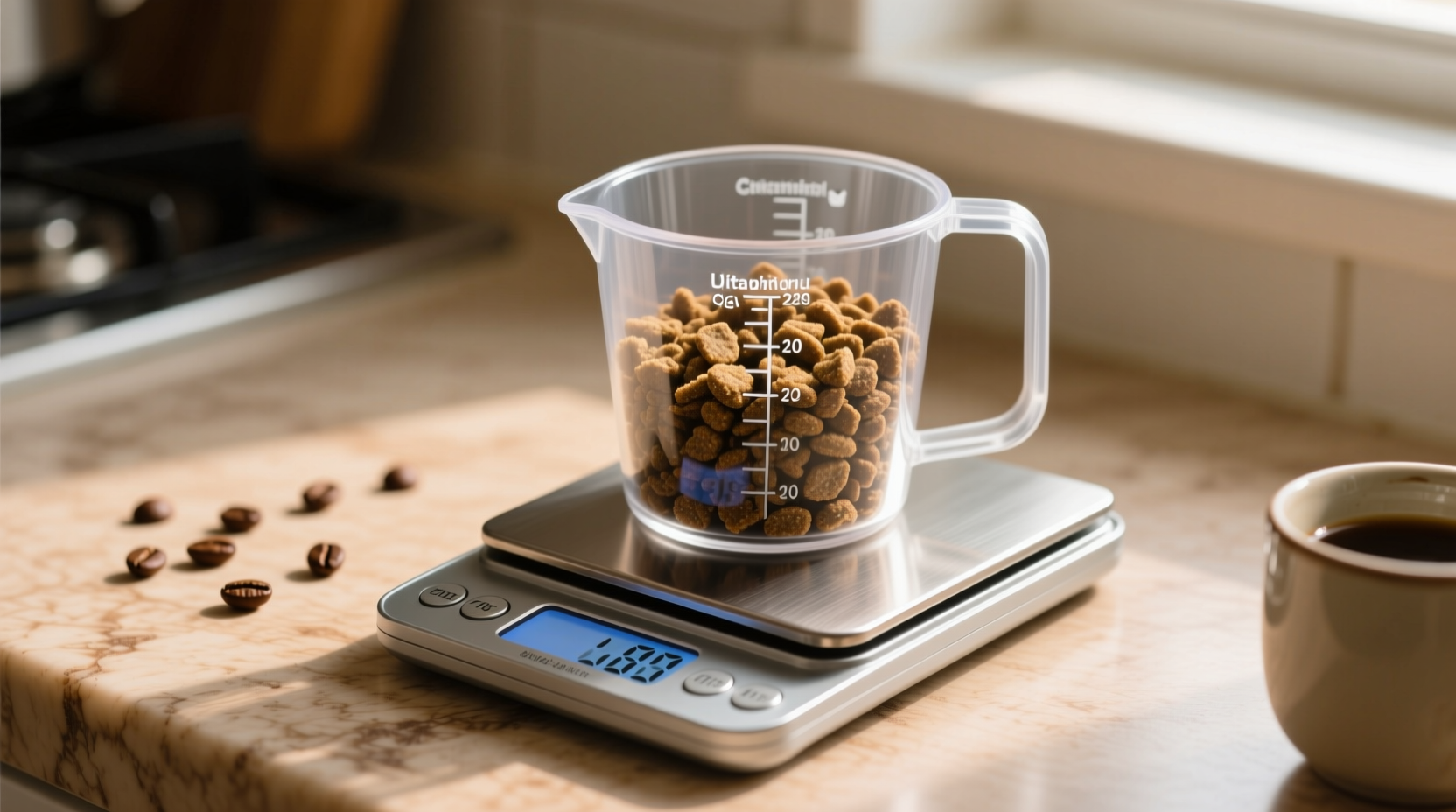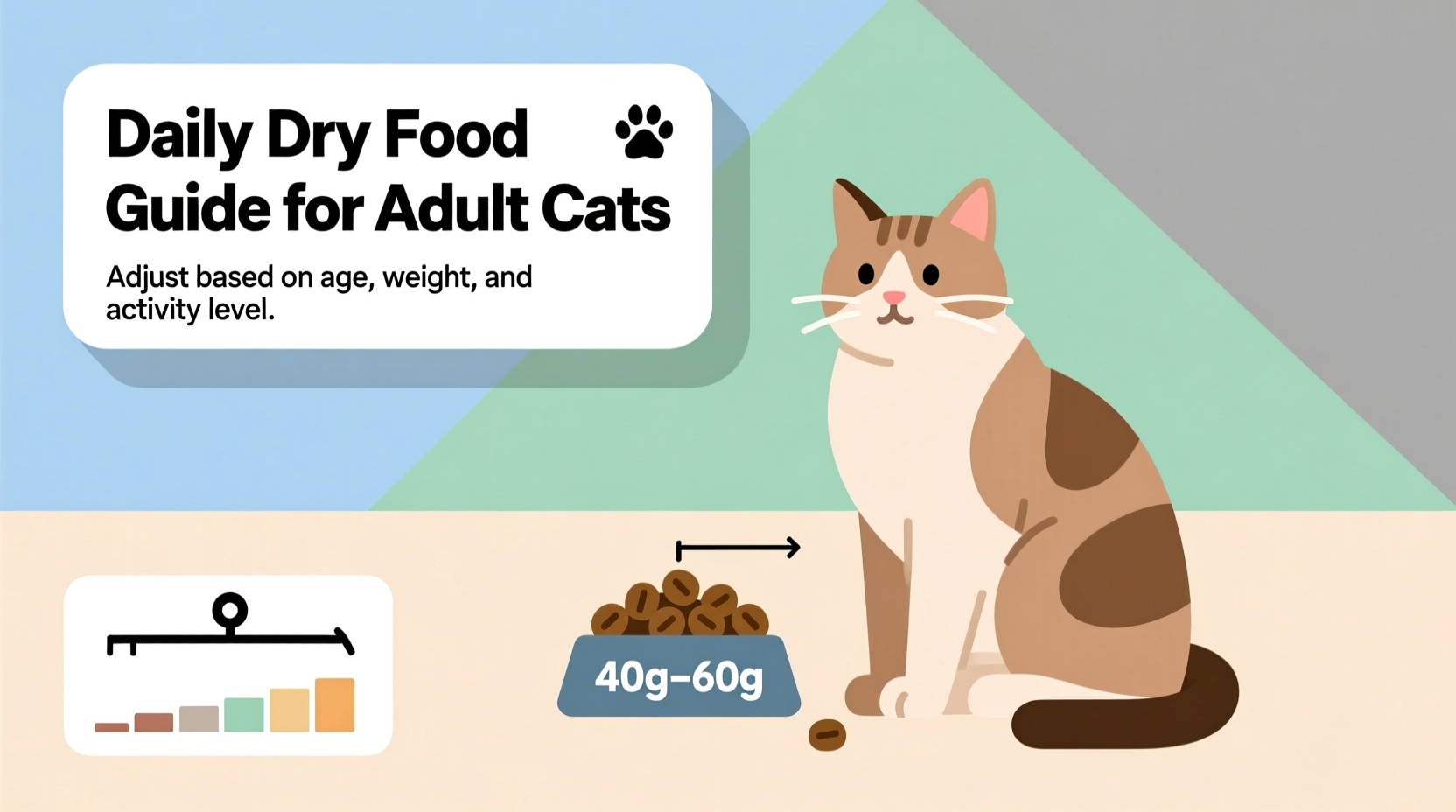Most adult cats need 1/4 to 1/2 cup of dry cat food daily, split into two meals. The exact amount depends on your cat's weight, age, activity level, and the specific food's calorie content. Always measure portions rather than free-feeding to prevent obesity, which affects over 60% of indoor cats according to veterinary studies.
Getting your cat's dry food portions right isn't just about filling the bowl—it's about ensuring optimal health and longevity. Incorrect feeding contributes to obesity, which veterinary research shows affects more than 60% of household cats in developed countries. As a pet owner, understanding precise feeding measurements helps prevent serious health issues while keeping your feline companion energetic and thriving.
Understanding Your Cat's Nutritional Requirements
Cats are obligate carnivores with specific nutritional needs that differ significantly from dogs or humans. Their bodies require higher protein levels and certain amino acids like taurine that they cannot synthesize on their own. The American Association of Feed Control Officials (AAFCO) establishes minimum nutritional standards that quality cat foods must meet.
When determining how much dry food to feed your cat, consider these fundamental factors:
- Caloric density—Dry cat food typically contains 300-400 calories per cup
- Life stage—Kittens, adults, and seniors have different requirements
- Activity level—Indoor cats generally need fewer calories than outdoor cats
- Health conditions—Certain medical issues require dietary adjustments
Step-by-Step Feeding Measurement Guide
Accurate measurement is crucial—using standard measuring cups rather than "eyeballing" portions prevents overfeeding. Here's how to determine the right amount for your cat:
- Check your cat's weight—Use a household scale (weigh yourself first, then with your cat, and subtract)
- Consult the feeding chart on your cat food package as a starting point
- Calculate daily calories—Most adult cats need 20-30 calories per pound of body weight
- Divide the total into two or three measured meals throughout the day
- Monitor your cat's body condition monthly and adjust portions as needed
| Cat Weight (lbs) | Daily Food Amount | Approximate Calories |
|---|---|---|
| 5-7 | 1/4 - 1/3 cup | 150-220 |
| 8-10 | 1/3 - 1/2 cup | 220-300 |
| 11-13 | 1/2 - 5/8 cup | 300-380 |
| 14+ | 5/8 - 3/4 cup | 380-450 |
Note: These are general guidelines—always adjust based on your specific cat food's caloric content and your cat's individual needs.

Tailoring Portions to Your Cat's Life Stage
Feeding requirements change throughout your cat's life. Understanding these transitions ensures proper nutrition at each developmental stage:
Kittens (Up to 12 months)
Kittens require nearly twice the calories per pound compared to adult cats. Most kitten formulas recommend 1/2 to 3/4 cup daily, divided into 3-4 meals. The Cornell Feline Health Center emphasizes that proper nutrition during this critical growth period supports healthy development of bones, muscles, and organs.
Adult Cats (1-7 years)
This is when consistent portion control becomes most important. Indoor adult cats typically need 1/4 to 1/2 cup of quality dry food daily. The Association of American Feed Control Officials notes that many commercial cat foods contain 300-400 calories per cup, so precise measurement prevents the gradual weight gain that leads to obesity.
Senior Cats (7+ years)
Metabolism slows with age, often requiring 10-20% fewer calories. However, some seniors develop health conditions that alter their nutritional needs. The International Cat Care organization recommends consulting your veterinarian for personalized feeding plans for senior cats, as individual health factors become increasingly important.
Avoiding Common Feeding Mistakes
Even with good intentions, cat owners frequently make portion-related errors that impact their pet's health:
- Free-feeding without limits—Leaving food out constantly leads to overconsumption for 70% of cats according to veterinary surveys
- Ignoring treat calories—Treats should comprise no more than 10% of daily caloric intake
- Using improper measuring tools—Coffee mugs or random containers lead to inconsistent portions
- Not adjusting for seasonal activity changes—Indoor cats may need fewer calories during winter months
- Following package guidelines blindly—These are general recommendations that may not suit your individual cat
When to Adjust Your Cat's Food Portions
Your cat's ideal food amount isn't static—it should change based on several factors:
Weight changes: If your cat gains or loses more than 10% of their ideal body weight, adjust portions by 5-10% and monitor for two weeks.
Activity level shifts: Cats that become less active (due to age, weather, or lifestyle changes) typically need 5-15% fewer calories.
Health conditions: Medical issues like hyperthyroidism may increase appetite and caloric needs, while diabetes often requires strict portion control.
The American Veterinary Medical Association recommends conducting monthly body condition assessments using their standardized chart to determine if portion adjustments are needed.
Transitioning Between Foods Safely
When changing your cat's food brand or formula, gradual transition prevents digestive upset. The standard recommendation is:
- Days 1-2: 75% current food, 25% new food
- Days 3-4: 50% current food, 50% new food
- Days 5-6: 25% current food, 75% new food
- Day 7: 100% new food
During this transition, maintain the same total daily portion size while gradually replacing the old food with the new. This prevents accidental overfeeding since different foods have varying caloric densities.
Monitoring Your Cat's Health Through Feeding
Proper portioning isn't just about quantity—it's about observing how your cat responds to their food regimen:
Signs your portions are appropriate:
- You can feel but not prominently see ribs
- Visible waistline when viewed from above
- Abdomen tucks up when viewed from the side
- Consistent energy levels throughout the day
- Healthy, shiny coat
If your cat shows signs of begging constantly, seems lethargic, or has digestive issues, consult your veterinarian before making significant dietary changes. These could indicate underlying health issues rather than simple hunger.
Practical Tips for Successful Cat Feeding
Implement these strategies to ensure accurate and healthy feeding habits:
- Use an 8-ounce measuring cup specifically for pet food
- Store food in original bag inside a sealed container to maintain freshness
- Consider puzzle feeders to slow eating and provide mental stimulation
- Establish consistent feeding times rather than free-feeding
- Weigh your cat monthly using a consistent method
- Keep a simple feeding log to track portion sizes and your cat's response
Remember that each cat is an individual—what works for one may not work for another. The key is finding the right balance that keeps your feline companion at a healthy weight while providing complete nutrition.











 浙公网安备
33010002000092号
浙公网安备
33010002000092号 浙B2-20120091-4
浙B2-20120091-4